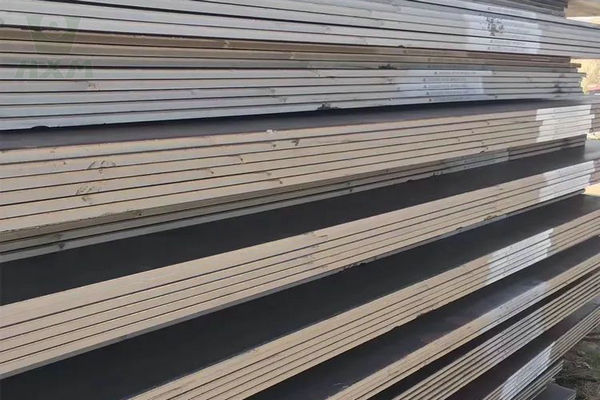In this comparison, we will explore the definitions of both grades, analyze their differences in composition and properties, and ultimately determine which material is better suited for specific applications.
What Is 1018 Steel?
1018 steel is a low-carbon steel that contains approximately 0.18% carbon content. It is one of the most commonly used grades of carbon steel due to its relatively low cost, ease of machining, and good mechanical properties. The low carbon content in 1018 steel provides excellent weldability and formability, making it suitable for various applications where moderate strength and toughness are required.
What Is 1045 Steel?
1045 steel, on the other hand, is a medium-carbon steel with around 0.45% carbon content. This higher carbon content results in increased strength and hardness compared to 1018 steel. 1045 steel is commonly used in applications that require higher strength and wear resistance, such as axles, gears, shafts, and other machinery parts.
1018 Vs 1045 Steel Differences
The strength and thickness of the steel plate are crucial factors in ensuring structural integrity and safety. Higher-strength steel plates offer better load-carrying capacity, making them suitable for heavy-duty applications. However, it’s essential to strike a balance between strength and weight, as thicker plates can increase the overall weight of the structure. Perform thorough structural analysis and consult with engineers to determine the optimal thickness and strength requirements for your project.
1018 Vs 1045 Steel Carbon Content:
- 1018 Steel: It is a low-carbon steel with approximately 0.18% carbon content. The low carbon presence contributes to its favorable weldability and formability characteristics.
- 1045 Steel: This is a medium-carbon steel containing around 0.45% carbon. The higher carbon content imparts increased strength and hardness, making it suitable for applications requiring higher mechanical properties.
1018 Vs 1045 Steel Strength and Hardness:
- 1018 Steel: Due to its lower carbon content, 1018 steel offers lower tensile strength and hardness compared to 1045 steel. It is considered a mild steel, making it easier to work with but with lower overall mechanical performance.
- 1045 Steel: With its higher carbon content, 1045 steel exhibits higher tensile strength and hardness. This increased strength makes it an excellent choice for applications where more robust and durable materials are necessary.
1018 Vs 1045 Steel Machinability:
- 1018 Steel: Known for its exceptional machinability, 1018 steel is easy to cut, drill, and machine due to its lower carbon composition. This makes it a preferred option for projects requiring extensive machining operations.
- 1045 Steel: While still machinable, 1045 steel is not as easy to work with as 1018 steel due to its higher carbon content. Care must be taken during machining to maintain tool integrity and avoid excessive wear.
1018 Vs 1045 Steel Weldability:
Both 1018 and 1045 steel possess good weldability. However, the lower carbon content in 1018 steel generally results in easier welding compared to 1045 steel.
1018 Vs 1045 Steel Cost:
When it comes to cost, 1018 steel is generally less expensive than 1045 steel. The primary reason for this price difference is the variation in the carbon content between the two materials.
1018 steel, being a low-carbon steel with approximately 0.18% carbon content, is easier and less expensive to produce. The lower carbon content requires less refining during the manufacturing process, which contributes to its lower cost.
On the other hand, 1045 steel, being a medium-carbon steel with around 0.45% carbon content, requires more careful processing and additional alloying elements to achieve its desired properties, such as increased strength and hardness. These additional steps in the manufacturing process for 1045 steel make it relatively more expensive compared to 1018 steel.
As with any material, the exact cost difference between 1018 and 1045 steel may vary depending on factors such as the current market conditions, supplier, location, and the quantity of material being purchased. However, in general, you can expect 1018 steel to be more cost-effective compared to 1045 steel.
1018 Vs 1045 Applications:
- 1018 Steel: Commonly used in applications where moderate strength, good weldability, and formability are essential. Examples include bolts, studs, couplings, and general machinery parts.
- 1045 Steel: Suitable for applications requiring higher strength, hardness, and wear resistance. It is often used in gears, axles, shafts, and other components subjected to higher stress and mechanical loads.
In conclusion
In conclusion, the choice between 1018 and 1045 steel depends on the specific requirements of the project. If cost-effectiveness, formability, and ease of machining are important, 1018 steel may be the preferred option. On the other hand, if increased strength, hardness, and wear resistance are crucial, 1045 steel would be a more appropriate choice.









